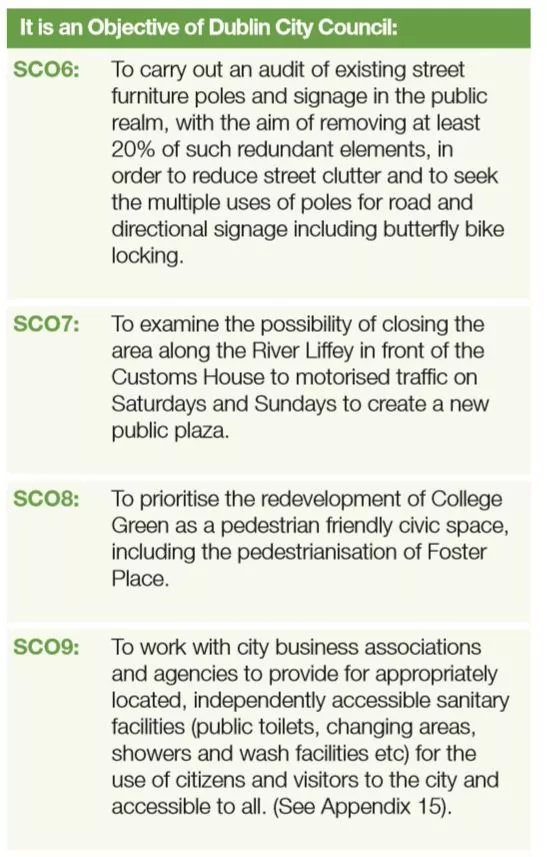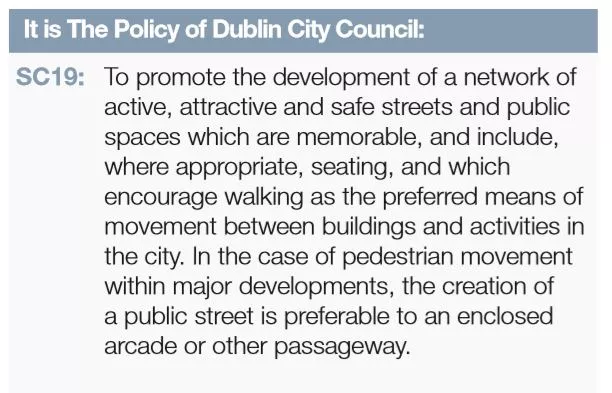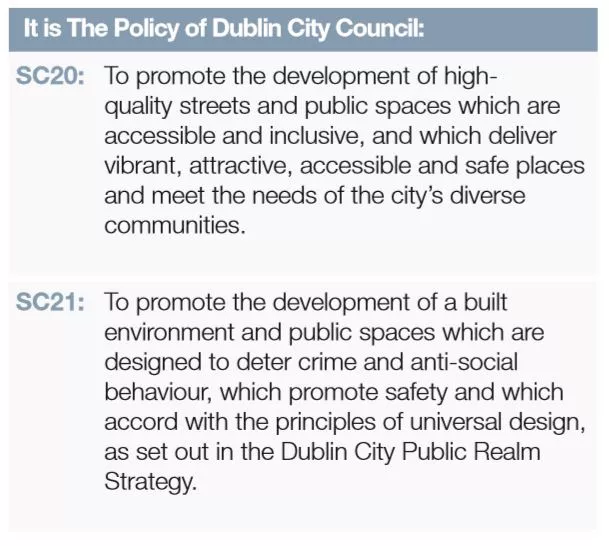4.5.5 The Public Realm
4.5.5 The Public Realm
A high-quality public realm makes a more attractive place to live, work and visit, and provides for an improved quality of life for all. Such a public realm can have a very positive impact on Dublin’s competiveness with other city regions internationally, both for tourism and for investment.
With regard to the city centre, in particular, ease of access to persons of all ages and abilities is a significant indicator as to how inclusive Dublin is as a city. ‘Your City - Your Space’, Dublin City’s Public Realm Strategy (2012), builds on the Legible Dublin Study 2004, and the implementation of this strategy has and will continue to result in significant upgrading of the city’s public realm.
Proposals to improve the public realm will take account of the Urban Design Manual - A Companion Document to the Guidelines for Planning Authorities on Sustainable Residential Development in Urban Areas (Department of Environment, Heritage and Local Government, 2009) and the Design Manual for Urban Roads and Streets (Department of Environment, Community and Local Government and Department of Transport, Tourism and Sport, 2013).
Improvements to the public realm in recent years include the renovation of Grafton Street, the pedestrianisation of Palace Street, environmental improvement works at Fade Street, the removal of brown fingerpost signs within the canal ring, and the environmental and visual benefits to the public realm achieved through the ‘Love the Lanes’ project.
Further enhancements to the public realm are to be designed for the Grafton Street Quarter. Future opportunities for improvements to the public realm also arise with the implementation of the Luas crosscity at St Stephen’s Green and surrounding areas.
It is desirable that the perceived extent of the city core expands over the coming years, due in part to very high footfall and relatively limited pedestrian space in the core. Proposals to create a new cultural quarter at Parnell Square, to include the re-location of the City Library from the ILAC Centre, and to renovate and create a new food hall and café/restaurant destination at the Victorian wholesale fruit and vegetable market at Mary’s Lane, will significantly expand the public’s perception of the city core, and will create new destination points in the city.
The incorporation of seating and landscaping into the design of the Luasenabled Rosie Hackett Bridge demonstrates a departure from designing a bridge primarily as a movement corridor, to instead recognise that the inclusion of seating affords the public the opportunity to rest and to enjoy the amenities of the riverscape, thereby significantly enhancing the public’s experience of their urban environment.
It is, therefore, very important that the City Council continues to develop public realm strategies and to invest in the urban environment, in order to ensure that a coherent, walkable city centre, which allows for ease of movement and is inviting to persons of all abilities, is achieved.


